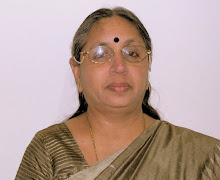 Changes driven by technological innovations, mass media, contact between societies, competitions, and wars are sweeping traditional societies affecting their culture. Culture includes not only an integrated set of beliefs values and knowledge but also excellence in arts. Today, unfortunately, in our rat race , we seem to give little thought to the damage being inflicted on our culture of fine arts particularly in our temples. A national newspaper recently carried a story on the extent of vandalism happening in Kerala and Tamilnadu temples in the guise of renovation An extract from the report is given below
Changes driven by technological innovations, mass media, contact between societies, competitions, and wars are sweeping traditional societies affecting their culture. Culture includes not only an integrated set of beliefs values and knowledge but also excellence in arts. Today, unfortunately, in our rat race , we seem to give little thought to the damage being inflicted on our culture of fine arts particularly in our temples. A national newspaper recently carried a story on the extent of vandalism happening in Kerala and Tamilnadu temples in the guise of renovation An extract from the report is given below CHENNAI: An array of striking paintings has been whitewashed out of existence at the Rajagopalaswamy Kulasekara Alwar temple at Mannarkovil in Tirunelveli district. These were images of the coronation of Rama, the Dasavataram, Narasimha, Garuda, a wrestler fighting an elephant and so on. Estimates put their antiquity at 150 to 250 years.
More recently, murals of the late Nayak period were whitewashed at Muthalamman temple at Kodangipatti, near Karur.
Over the past several years, similar mural masterpieces have been whitewashed at the Meenakshi temple in Madurai, the Arunachaleswarar temple at Tiruvannamalai, the Vishnu temple at Tiruvellarai near Tiruchi, and Siva temples at Patteeswaram near Kumbakonam, Tiruppulivanam in Kancheepuram district and Vedaranyam, all administered by the Hindu Religious and Charitable Endowments Department of the Tamil Nadu government.
Similar vandalism has been witnessed at other temples in the State, including the Varadarajaswamy temple in Kancheepuram, the Lakshmi Narasimhar temple at Sevilimedu, and the Sanjeeva Rayar temple at Iyengarkulam, both near Kancheepuram.
This is sad news for the art lovers. Such incidents are only pointers to the fact that persons appointed in HRCE departments are either ignorant of the value of our heritage or willfully indulge in obliterating masterpieces which should make them liable for charges of criminal negligence. This also points to the urgent need to create awareness about this great heritage among our people particularly the youth and children.
Kerala mural art which thrived on royal patronage, has a rich tradition of religious themes based on principles of proportion, poise, gunas-sattvic, rajassic, tamasic which are symbolized by the colour.The uniqueness lies in the selection of earthy colours like ochre, saffron, from natural sources like herbs, grasses, stones, vegetables, fruits, roots etc, and the use of elaborate costume,, ornaments, etc. all of which, results in graceful compositions.
There is some comforting news too! A new genre of mural artists determined to revive this unique mural tradition are bringing about a lot of awareness among public. One such training programme conducted exclusively for women by S.K. Pottekat cultural Centre at


we get what we deserve
ReplyDelete